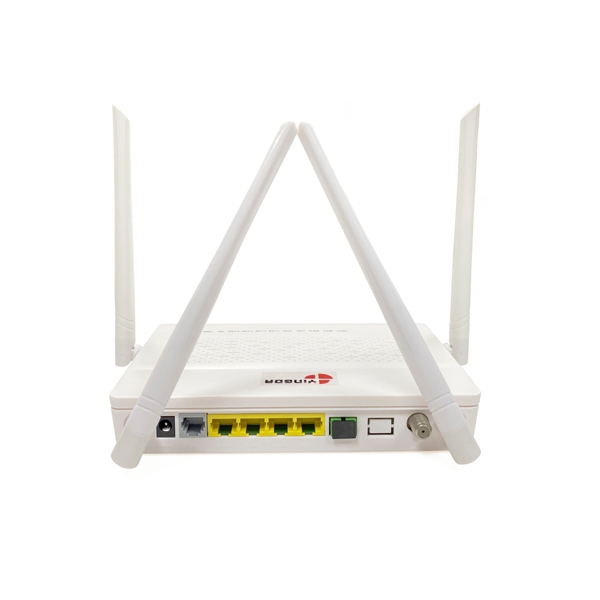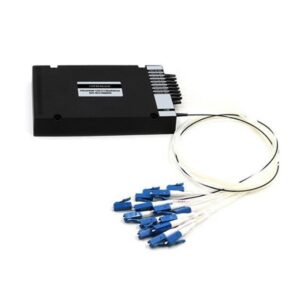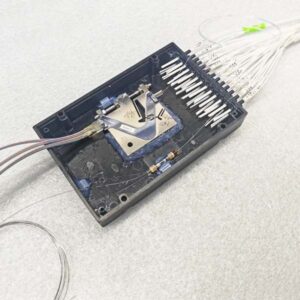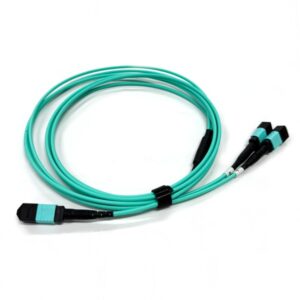When talking about user-side equipment in broadband optical fiber access, we often see English terms such as ONU, ONT, SFU, and HGU. What do these terms mean? What’s the difference?
ONU and ONT
The main application types of broadband optical fiber access include: FTTH, FTTO and FTTB. The forms of user-side equipment are also different under different application types. The user-side equipment of FTTH and FTTO is used by a single user and is called ONT (Optical Network Terminal). The user-side equipment of FTTB is shared by multiple users and is called ONU (Optical Network Unit).
The users mentioned here refer to users billed independently by the operator, not the number of terminals used. For example, FTTH ONTs are generally shared by multiple terminals in the home, but can only be counted as one user.
Fiber Optic GPON ONU ONT 4GE AC WIFI CATV VOIP USB
ONU product is the terminal equipment of a series of G PON which comply fully with ITU-G.984.1/2/3/4 standard and meet the energy-saving of G.987.3 protocol, ONU is based on mature and stable and high cost-effective GPON technology which adopts high-performance GPON REALTEK chipset and has high reliability,easy management, flexible configuration,robustness, good quality service guarantee(Qos).
This ONU supports WIFI4 (IEEE802.11b/g/n) and WIFI5 (IEEE802.11ac) concurrently, a WEB system provided simplifies the configuration of the WIFI and connects to INTERNET conveniently for users.
ONU supports the G/E PON switching function automatically
ONU supports a RJ11 interface for VOIP applications application and one RF signal for TV.
Type of ONT
ONT is what we commonly call optical modem. It is divided into SFU (Single Family Unit), HGU (Home Gateway Unit) and SBU (Single Business Unit).
1.1 SFU
SFU generally has 1 to 4 Ethernet interfaces, 1 to 2 fixed telephone interfaces, and some models also have cable TV interfaces. SFU does not have a home gateway function, and requires a terminal connected through the Ethernet port to dial-up Internet access, and the remote management function is weak. The optical modem used in the early days of FTTH belonged to SFU and is rarely used now.
1.2 HGU
FTTH users opened in recent years are all equipped with HGU optical modems. Compared with SFU, HGU has the following advantages:
(1) HGU is a gateway device, which is convenient for internal home networking; while SFU is a transparent transmission device and does not have gateway capabilities. When building a home network, it generally requires the cooperation of a gateway device such as a home router.
(2) HGU supports routing mode, has NAT function, and is a layer 3 device; while SFU type only supports layer 2 bridging mode and is equivalent to a layer 2 switch.
(3) HGU can implement its own broadband dial-up application, and connected computers, mobile terminals, etc. can access the Internet directly without dial-up; while SFU must dial-up from the user’s computer or mobile phone or other terminals, or dial-up the Internet through a home router.
(4) HGU is easier to operate and manage on a large scale.
HGU usually comes with built-in wifi and USB interface.
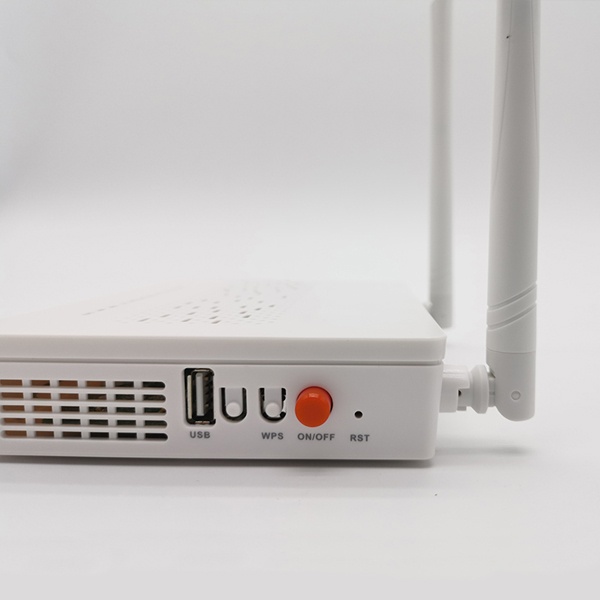
1.3 SBU
SBU is mainly used for access of FTTO users. It generally has an Ethernet interface. Some models have an E1 interface, a fixed telephone interface, or have wifi function. Compared with SFU and HGU, SBU has better electrical protection performance and higher stability, and is also commonly used in outdoor situations such as video surveillance.

Type of ONU
ONU is divided into MDU (Multi-Dwelling Unit, multi-dwelling unit) and MTU (Multi-Tenant Unit, multi-tenant unit).
2.2 MDU
MDU is mainly used for the access of multiple residential users under FTTB application type. It generally has at least 4 user-side interfaces, usually with 8-way, 16-way, 24-way FE or FE+POTS (fixed telephone) interfaces.

2.2 MTU
MTU is mainly used for the access of multiple enterprise users or multiple terminals in the same enterprise in FTTB scenarios. In addition to having an Ethernet interface and a fixed phone interface, it may also have an E1 interface; the appearance and function of MTU are usually not the same as MDU. The difference is that the electrical protection performance is better and the stability is higher. With the popularity of FTTO, the application scenarios of MTU are becoming smaller and smaller.
Conclusion
Broadband optical fiber access mainly uses PON technology. When the specific form of user-side equipment is not distinguished, the user-side equipment of the PON system can be collectively referred to as ONU.

ONU, ONT, SFU, HGU are all description to describe user-side equipment for broadband access from different perspectives. The relationship between them is shown in the figure below.


